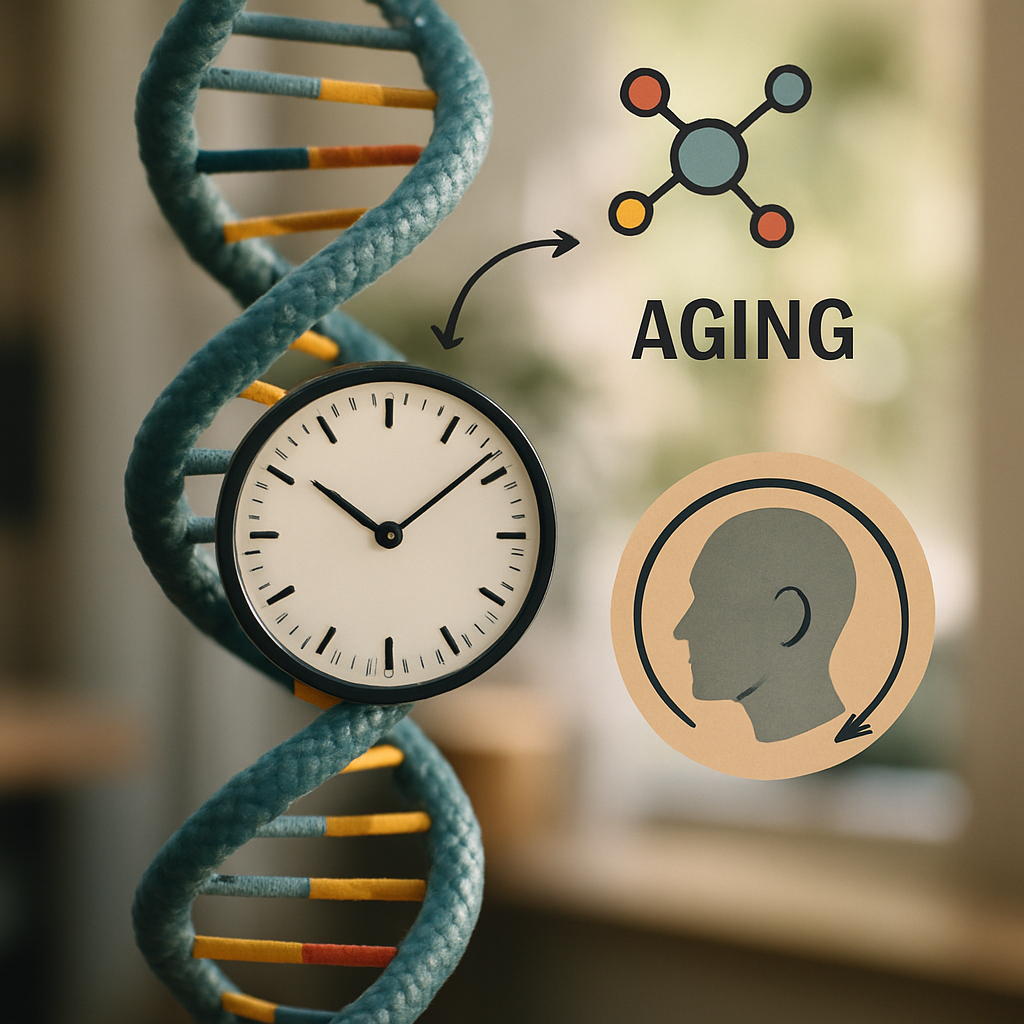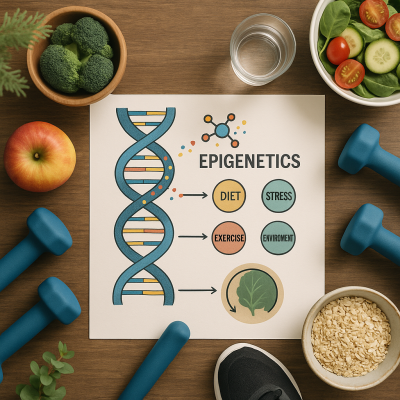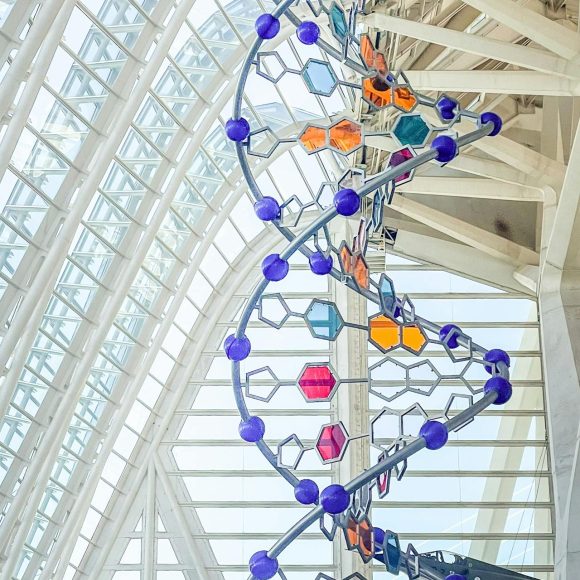Can Quantum Therapy Regenerate Our Human DNA? Here’s the Truth
D.N.A. | Video By Byron Bhxr
The search for longevity and the cure for degenerative diseases has led scientists and researchers to explore increasingly advanced frontiers of medicine. In this context, quantum therapy emerges as a revolutionary approach that promises to transform our understanding of cellular healing and regeneration processes. Based on the principles of quantum physics and the understanding that our body functions not only as a set of biochemical systems but also as a complex energy field, quantum therapy proposes interventions that act at the most fundamental level of matter: the quantum field where DNA is inserted. This new perspective is opening pathways for techniques that aim not only to treat symptoms but to actually regenerate and reprogram the human genetic code to promote healing at levels previously considered impossible by conventional medicine.
The application of quantum therapy in DNA regeneration represents a fascinating convergence between modern physics, molecular biology, and ancient traditions of energy healing. Unlike conventional therapies that treat the body only at the biochemical level, quantum approaches recognize that our DNA is not just a physical structure but also a complex vibrational system that responds to subtle energy fields. Pioneer researchers in this field suggest that DNA functions as an antenna that can receive and transmit information through specific frequencies, opening possibilities for interventions based on resonance and information to effectively reprogram damaged cells and activate self-healing processes that remain dormant in our genetic code. This article explores the foundations, applications, and future perspectives of this revolutionary approach that promises to transform our understanding of the human body’s regeneration potential.
Fundamentos Científicos da Terapia Quântica e sua Relação com o DNA
To understand how quantum therapy can influence human DNA, we first need to explore the scientific principles that support this approach. Quantum physics revealed that at the subatomic level, matter exists simultaneously as both particle and wave, a phenomenon known as wave-particle duality. This revolutionary discovery suggests that our DNA, like all matter, also possesses wave properties and vibrates at specific frequencies. Research led by biophysicist Fritz-Albert Popp demonstrated that DNA emits biophotons – light particles that appear to carry vital information for cellular communication. These biophotons create a coherent energy field that, according to the principles of quantum therapy, can be harmonized and rebalanced to promote cellular regeneration processes.
Another fundamental discovery for quantum therapy was made by Russian researcher Peter Gariaev, considered the father of “wave genetics.” His experiments suggested that DNA can be influenced by specific frequency waves, including light waves and sounds. In one of his most notable experiments, Gariaev managed to transmit genetic information patterns from one organism to another using only laser, without any physical contact between them. This phenomenon, called the “DNA phantom effect,” points to the possibility that genetic information can be transferred by purely energetic means, a fundamental principle for therapeutic applications of quantum medicine in the field of cellular regeneration and damaged tissue recovery.
Mechanisms of Action: How Bioresonance Affects the Genetic Code
Colors and Resonance | Video By Eugene Vasilevich
Bioresonance, one of the main components of quantum therapy, operates based on the principle that each cell and molecule in our body vibrates at a particular frequency. When we apply specific frequencies through bioresonance devices, we can theoretically restore the healthy vibrational pattern of DNA that has been compromised by disease, stress, or degenerative processes. This phenomenon is comparable to the principle of resonance in physics: when an external frequency matches the natural frequency of an object, amplification and energy transfer occur. In the cellular context, it is believed that harmonic frequencies can stimulate self-correction of genetic codes, while dissonant frequencies can neutralize vibratory patterns associated with diseases.
Quantum therapy applied to DNA often uses equipment capable of detecting the frequencies emitted by healthy cells and comparing them with the frequencies of compromised cells. Through this analysis, therapists can determine which frequencies need to be applied to restore balance. Preliminary research suggests that this process can activate silenced genes, deactivate genes associated with diseases, and even correct mutations through the reorganization of the electromagnetic field surrounding DNA. Physician and researcher Bruce Lipton proposes that the energetic environment of cells – including thoughts, emotions, and external frequencies – can effectively “turn on” or “turn off” specific genes, a process known as epigenetics, which forms the theoretical basis for many applications of quantum medicine in cellular regeneration.
Practical Applications of Quantum Therapy in Cellular Regeneration
The practical applications of quantum therapy for DNA regeneration are rapidly expanding, with specific protocols being developed for different health conditions. One of the most commonly used methods is Pulsed Electromagnetic Field therapy (PEMF), which uses low-frequency magnetic fields to stimulate cellular regeneration. Preliminary clinical studies indicate that PEMF can increase protein synthesis, improve blood circulation, and accelerate bone fracture repair by modulating genetic activity. In some cases, patients with degenerative conditions who did not respond to conventional treatments have reported significant improvements after regular PEMF sessions, suggesting that this modality of quantum therapy can activate regenerative resources encoded in our DNA that remain inaccessible to traditional medical approaches. Another promising method is photonic therapy, which uses lights of different spectrums to influence cellular activity.
Quantum therapy devices based on low-intensity laser light have demonstrated the ability to stimulate mitochondria, the cell’s “power plant,” thereby improving ATP production and accelerating tissue repair processes. Researchers from the University of Medicine in Vienna have documented that the application of light at specific frequencies can modulate the expression of genes related to tissue regeneration and the reduction of chronic inflammatory processes. These discoveries pave the way for personalized protocols that can address specific conditions through precise modulation of genetic activity using principles of quantum medicine..
Quantum Epigenetics: Reprogramming Genetic Expression Through Energy Fields
The emerging discipline of quantum epigenetics investigates how energetic and informational factors can modify gene expression without altering the DNA sequence. This field has particular relevance for quantum therapy, as it suggests that we can influence which genes are activated or silenced through precise energetic interventions. Recent research in epigenetics demonstrates that chemical markers can be added to or removed from DNA in response to environmental factors, including electromagnetic frequencies. Quantum therapy explores this phenomenon by applying specific frequencies that theoretically can induce beneficial epigenetic modifications, activating genes related to cellular regeneration and deactivating genes associated with aging and degeneration.
A fascinating aspect of quantum epigenetics is the concept of “cellular memory,” the idea that physical and emotional traumas can leave epigenetic marks that affect gene expression for generations. Advanced protocols of quantum therapy frequently include work with these cellular memories, using resonance techniques to “clear” negative epigenetic patterns that are inherited or acquired. Researcher Dawson Church, in his work on what he calls “Gene Medicine,” has documented cases where quantum therapy techniques combined with specific psychological approaches resulted in measurable changes in gene expression, particularly in genes related to stress response and chronic inflammation, two critical factors in many degenerative diseases and in the aging process.
Integrative Protocols: Combining Quantum Therapy with Conventional Approaches
Vídeo By Nicola Narracci
To maximize the benefits of cellular regeneration, many specialists recommend protocols that integrate quantum therapy with conventional approaches. This synergistic combination can enhance results, especially in cases of chronic or degenerative diseases. For example, in integrative oncology treatment centers, patients receive conventional therapies such as chemotherapy and radiation, but also participate in quantum therapy sessions specifically designed to protect the DNA of healthy cells from the side effects of treatments, while simultaneously amplifying the impact of conventional interventions on cancer cells. This dual approach has demonstrated, in preliminary studies, reduction of side effects and improvement in quality of life during aggressive treatments.
Another promising example of integrative protocol involves the treatment of autoimmune diseases, where quantum therapy is used to rebalance the immune system while conventional medications control acute symptoms. Dr. Dimitri Znaev, a specialist in integrative medicine, reports cases where patients with lupus and rheumatoid arthritis experienced prolonged remissions when pharmacological treatments were combined with regular quantum bioresonance sessions focused on regenerating the DNA of immune cells. The key to the success of these protocols seems to lie in open communication between professionals from different areas and careful monitoring of individual reactions, allowing personalized adjustments that optimize therapeutic results at both the biochemical and energetic levels.

The Impact of Consciousness on Quantum DNA Regeneration
One of the most controversial yet intriguing aspects of quantum therapy is the proposal that the consciousness of both patient and therapist can directly influence DNA regeneration processes. Experiments conducted by the HeartMath Institute suggest that coherent emotional states, characterized by feelings such as gratitude and love, can affect water structure and potentially DNA configuration. Considering that approximately 70% of the human body is composed of water, and that DNA is constantly immersed in an aqueous environment, the implication is that our consciousness could, through quantum mechanisms, directly influence genetic repair processes and cellular regeneration.
Video By Chandresh Uike
Some advanced quantum therapy protocols incorporate guided meditation techniques and creative visualization specifically directed at cellular regeneration. In these sessions, patients are guided to visualize their DNA reconfiguring into healthy patterns while maintaining elevated emotional states. Dr. Joe Dispenza, who researches the intersection between consciousness and biology, presents in his studies documented cases of tissue regeneration seemingly impossible to explain by conventional medical models, but potentially understandable in light of the principles of quantum therapy. Although the scientific community remains skeptical about the exact mechanisms, the growing anecdotal evidence of extraordinary recoveries in contexts that incorporate conscious work with energy has inspired new studies to investigate how consciousness can serve as a programming tool for the quantum field that influences DNA.
Challenges and Future of Quantum Regenerative Medicine
Despite its revolutionary potential, quantum therapy applied to DNA regeneration faces significant challenges. The main obstacle is the difficulty in establishing standardized protocols that can be replicated in conventional clinical studies. The highly individualized nature of quantum therapies and the influence of subjective factors such as the therapist’s intention and the patient’s mental state introduce variables that are difficult to control in traditional research environments. Additionally, the lack of measurement equipment sensitive enough to detect all the bioenergetic changes associated with the treatments makes scientific documentation of results difficult, despite the clinical benefits observed by patients and therapists.
The future of quantum therapy in DNA regeneration will likely depend on the development of new research paradigms that can accommodate the multidimensional nature of these interventions. Pioneering scientists like William Tiller propose experimental models that incorporate both physical measurements and assessments of changes in informational fields, an advancement that could transform our understanding of quantum medicine’s mechanisms of action. As technologies such as biophoton imaging and subtle field detection become more sophisticated, we expect to see a new generation of studies capable of precisely mapping how quantum therapy influences DNA regeneration processes, potentially leading to wider acceptance of these approaches by the conventional medical community and the development of standardized integrative protocols for conditions previously considered irreversible.
Self-Care Practices Based on Quantum Therapy Principles

Even without access to sophisticated quantum therapy equipment, individuals interested in exploring the regenerative potential of their DNA can incorporate practices based on the same energetic principles. The fundamental principle is the understanding that our thoughts, emotions, and daily choices generate energy fields that constantly interact with our genetic material through epigenetic mechanisms. Practices such as mindfulness meditation, when performed regularly, have demonstrated in recent studies the ability to positively influence gene expression, particularly genes related to inflammatory response and oxidative stress, two crucial factors in degenerative processes and cellular aging.
Conscious breathing is another accessible practice aligned with the principles of quantum therapy. Techniques such as coherent breathing, where inhalation and exhalation are equally balanced (usually in 5-6 second cycles), have demonstrated the ability to harmonize the autonomic nervous system and establish what researchers at the HeartMath Institute call “heart coherence.” This physiological state is associated with the production of harmonic cardiac electromagnetic waves that, according to quantum therapy theory, can create an ideal energetic environment for cellular regeneration and optimized gene expression. Complementing these practices with regular exposure to sunlight, contact with nature, and adequate hydration with quality water, individuals can create a bioenergetic environment that supports the body’s natural ability to maintain and regenerate its DNA, even without formal clinical interventions of quantum medicine.
Enjoying this content? You’ll love this one too:

Studies on Fractals: Practical Applications in Integrative Medicine
Frequently Asked Questions about Quantum Therapy and DNA Regeneration
1. What differentiates quantum therapy from other approaches to energy medicine?
Quantum therapy distinguishes itself by focusing on the principles of quantum physics applied to biological systems, working specifically with the wave properties of cells and DNA. While many forms of traditional energy medicine, such as acupuncture or Reiki, also recognize the energetic nature of the human body, quantum therapy uses modern technologies to measure and apply specific frequencies, seeking to create more precise and targeted interventions based on the contemporary scientific understanding of biophotonic fields and cellular resonance.
2. Are there risks associated with quantum therapy directed at DNA regeneration?
When administered by qualified professionals, quantum therapy generally presents a low risk of adverse effects. However, patients may occasionally experience what therapists call a “healing reaction,” a temporary period of symptom intensification as the body readjusts. People with electronic medical devices such as pacemakers should consult their doctors before undergoing therapies that use electromagnetic fields. It is important to emphasize that quantum therapy should be considered complementary and not a substitute for conventional medical treatments for serious conditions.
3. How can I verify if a quantum therapist is qualified? Due to the emerging nature of this field, there are still no universal certification standards for practitioners of quantum therapy. It is recommended to seek professionals with solid scientific training, preferably with education in health sciences, physics, or biophysics, as well as specific training in bioenergetic therapies. Ask for references from other patients and, ideally, look for therapists who work in collaboration with conventional doctors and are open to integrative approaches. Be wary of those who make exaggerated promises or recommend abandoning necessary medical treatments.
4. How long does it take to observe results in cellular regeneration with quantum therapy? The answer varies significantly depending on the condition being treated, the individual’s general health, and the specific approach used. Some people report improvements in symptoms such as pain or inflammation after the first sessions, while deeper tissue regeneration processes generally require regular treatment for longer periods, typically 3 to 6 months. Quantum therapy specialists typically recommend a minimum of 8-12 initial sessions, followed by periodic maintenance to sustain the results, especially in chronic conditions involving genetic damage accumulated over time.
5. Can quantum therapy really reverse aging through DNA regeneration? Although there are impressive anecdotal reports and some preliminary studies suggesting that certain quantum therapy approaches may influence biological markers associated with aging, conclusive scientific evidence is still limited. Recent research in epigenetics demonstrates that certain biomarkers of aging, such as DNA methylation patterns (known as the “epigenetic clock”), can be influenced by lifestyle-based interventions. Theoretically, quantum therapy could amplify these effects through its influence on bioenergetic fields that regulate gene expression, but more controlled research is needed before definitive claims can be made about its effectiveness in reversing cellular aging.
Have you ever experienced any form of quantum therapy or other energetic approach to improve your health? What were your experiences? Share in the comments below and let’s continue this fascinating conversation about the regenerative potential hidden in our DNA!
Stay Inspired – Join Our Inner Circle!
Subscribe to our newsletter for exclusive tips, soulful stories, product finds, and early access to new blog posts + freebies!




